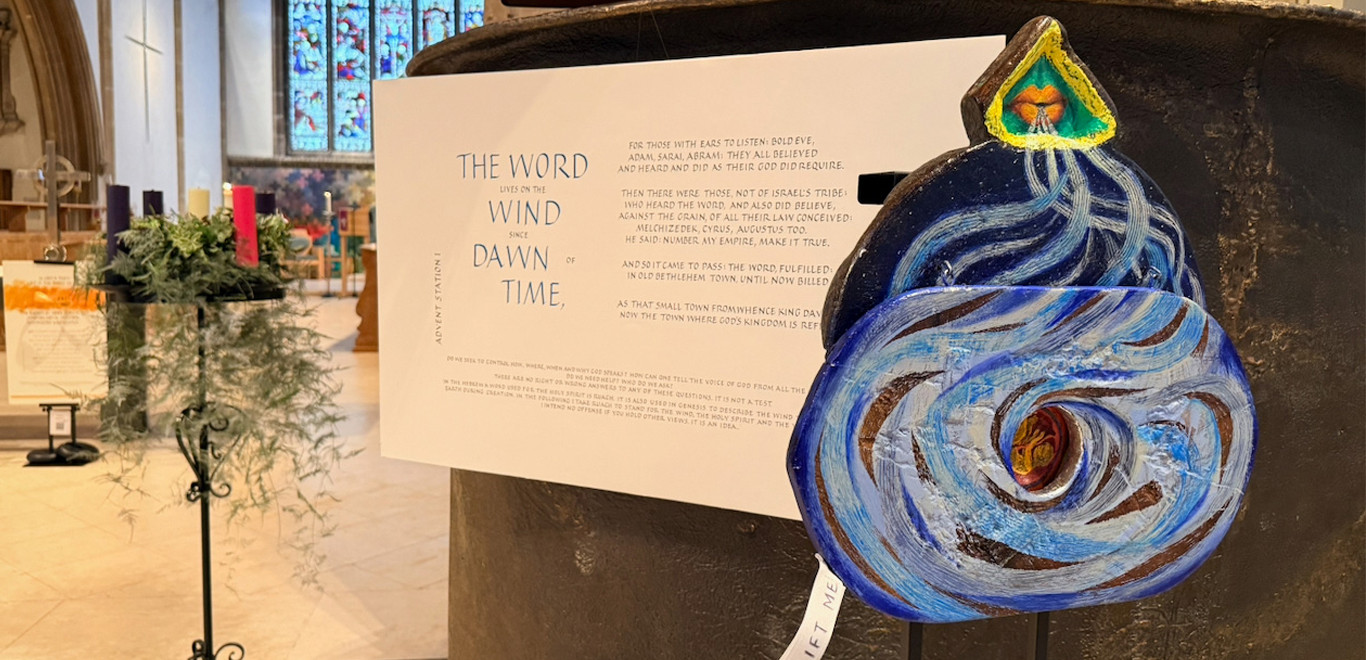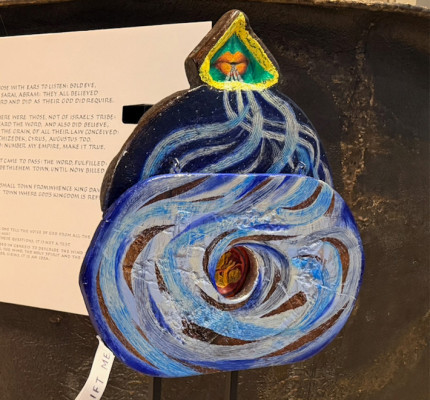Chelmsford Cathedral has unveiled 12 Advent Stations, a new exhibition that invites visitors to experience the Nativity in a strikingly contemporary way.
Rather than presenting a familiar, peaceful Christmas scene, the installation asks us to look again at the story as something raw, urgent and deeply human.
Spread throughout the Cathedral, the twelve stations bring together the creative talents of three artists from St Martin’s Church in North West London: painter Mark Cazalet, calligrapher Pansy Campbell, and poet Richard Leaf.
A contemporary retelling of the Nativity
The twelve distinct stations intricately blend original striking artwork, evocative poetry, delicate calligraphy and an immersive audio track. Together, they retell the story of God's arrival in the world, not through distant figures, but as witnessed and experienced by ordinary people. This approach brings the Nativity into sharp focus, making it feel immediate and relevant to the world today.
The exhibition portrays a struggling young family, whose uncertain journey echoes the vulnerabilities many face today, alongside gestures of kindness emerging from the most unlikely places. This is set against contemporary realities: the figure of Herod is reimagined in the likeness of today’s self-centred leaders who dominate our media, while the harsh reality of people forced to flee violence and the patient hope of aged folk waiting for miracles reflects the distressing headlines that shape our world.
The Very Revd Dr Jessica Martin, the Dean of Chelmsford Cathedral, reflected on the exhibition’s timely voice:
‘The Advent Stations invite you to see, from an intimate, personal yet also uncanny space, the workings of God in the life of a young family dealing with the threats of an unpredictable and often violent world. They are defenceless and yet visited by angels, weak and yet blazingly joyful, uncertain and yet enduringly faithful.
"It’s unflinching in its view of the cruelties that the vulnerable - those without power and influence - face in our world, but it manages at the same time to be full of joy and hope, and even a kind of exuberance in its colour and variety of media. Seeing it is not just coming to look at an artwork. It is an encounter.’
The exhibition encourages visitors to engage with the Stations in their own way—whether drawn to the painting, the poetry, the calligraphy, or the recorded voices—hoping all will discover anew the blessing: “Peace be with you.”
12 Advent Stations is now open for visitors throughout Advent at Chelmsford Cathedral.
About the Artists
Mark Cazalet is an accomplished artist whose work blends medieval figuration and Mughal miniature painting, inspired by studies at L’Ecole-des-Beaux-Arts in Paris and M.S. University Baroda in India. His career spans both gallery exhibitions and ecclesiastical commissions, including the Tree of Life and St Cedd’s window at Chelmsford Cathedral.
Pansy Campbell is a creative calligrapher who uses her art to elevate the ordinary and invite deeper contemplation. In these Advent Stations, she explores the meaning of ‘Ordinary’ within the context of miracles, reminding us that what is often overlooked can be truly special.
Richard Leaf is a writer for radio, theatre, and screen, with a background in acting. His passion for language and “The Word” is reflected in his poetry, crafted in the sonnet form out of admiration for William Shakespeare, Edmund Spenser and Don Paterson.






